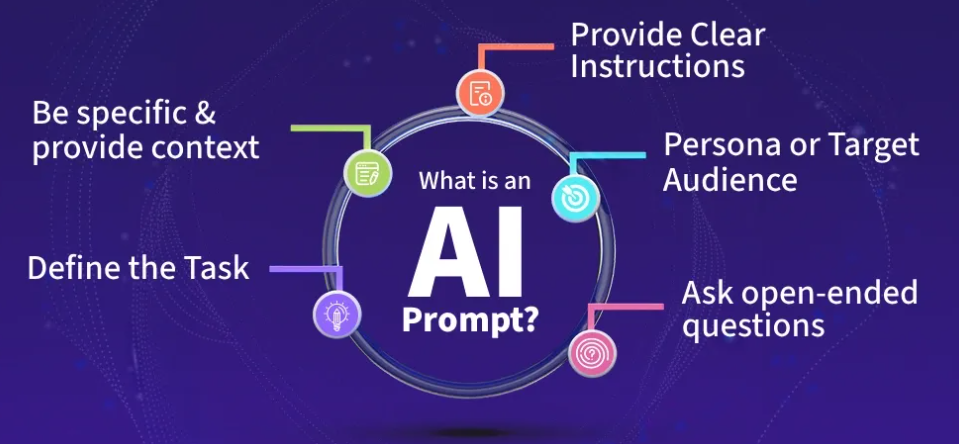The Secrets of Prompts: A Dual Track for Everyday Users and AI Engineers
Hello everyone, Vantage here, and welcome back to VPS – the President's Suite. Recently, there's been a heated debate about Prompts. Some say they're obsolete, while others treat them as treasures. Both views are actually correct; they're just talking about different things. Today, Vantage will reveal 10 important insights about Prompts, helping you fully understand the ins and outs of prompt engineering!
1. The “Two Faces” of Prompts: Obsolete and Precious Simultaneously
Regarding prompts, some believe that with technological advancements, formulaic techniques are no longer meaningful; yet, others cherish them. Both perspectives are correct because they are discussing different types of “prompts.”
2. Prompts for Everyday Users: As Natural as Conversation
For everyday users, who interact with out-of-the-box products like ChatGPT or Doubao, complex prompt engineering techniques are largely unnecessary. You can refine the large language model's output through follow-up questions, just like communicating with a person. Providing sufficient **Context** and clear expression is key.
3. Prompts for AI Engineers: Building a Scientific “Program”
On the other hand, there's a category of prompts for AI engineers. They need to construct a scientific and rigorous prompt, much like writing a program. Because thousands of inputs will pass through this prompt daily, its quality directly determines the product's performance. ByteDance's newly released PromptCopilot is a tool designed for this scenario, optimizing prompts.
4. The “Golden Rule” for Improving Prompting Skills: Trial and Error, and Practice
The most effective way to improve prompting skills is through continuous trial and error, frequent interaction with large language models, and summarizing your unique experiences. This is far more effective than simply reading materials. In other words, whether you're an AI engineer or an everyday user, start using AI as early as possible; there's a wealth of ineffable, implicit experience to gain.
5. The Most Effective Prompting Technique: Few-shot Learning (Providing Examples)
The most effective prompting technique is few-shot learning, which simply means giving the AI a few examples. For instance, if you want the AI to write an email in your personal style, but “style” is hard to describe in words, you can paste a few of your previously written emails and then tell it: “Write an email for me to request sick leave today, in the same style as these emails.” By providing the examples you want, the AI's performance will improve significantly.
6. The “Demise” of Role-Playing Prompts: Stop Saying “You are a Senior XXX”
Role-playing prompt techniques are no longer useful. Previously, many people liked to preface their prompts with phrases like: “You are a senior XXX.” However, recent data research indicates that such methods are largely ineffective for new models and can be abandoned. They're pretty useless.
7. Another Effective Form of “Role-Playing”: Mimicking Thought Processes or Writing Styles
While direct role-playing is ineffective, there's a useful alternative. For example, you can instruct the AI to “think like Steve Jobs” or “refer to Yu Hua's writing style” when generating content. This kind of instruction, mimicking a specific thought process or style, can still effectively guide the AI's output.
8. “Deconstructing” Complex Problems: Let AI Think Before Acting
For complex problems, simply asking the AI to solve them directly often yields poor results. In such cases, you can ask it to break down the problem first. For example, ask it to outline its thought process step-by-step, and then instruct it to execute based on those steps. This approach significantly improves results, preventing the AI from giving unreliable answers when it's “at a loss.”
9. Model “Self-Correction”: A Powerful Tool for Iterative Optimization
Another useful technique is to encourage the model to self-correct. For instance, you can tell the AI: “Review what you've written; is the logic flawed, making it difficult to read?” After the model responds, ask it to iterate based on the new suggestions for improvement. This “critical thinking” guidance allows the AI to continuously optimize its output.
10. The “Core” of Prompts for Everyday Users: Context is King
For everyday users interacting with AI, Context is extremely important. This means: when you ask the model to perform a task, provide as much relevant information as possible. Otherwise, how will it know the background? Try to place the Context in the first part of your prompt, so the AI understands your intent and background from the outset.
By mastering these 10 secrets of Prompts, you'll be able to collaborate better with AI, making it a truly capable assistant for both daily conversations and professional development!









